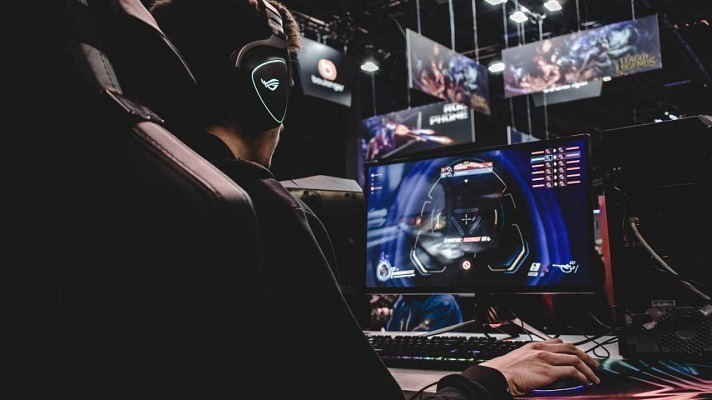Emerging applications of transcranial Direct Current Stimulation (tDCS): e‑sports skills training, cognitive enhancement in older adults
 10 Minutes of Electrical Stimulation During Gaming Helps Improve e‑Sports Skills (Technology Networks):
10 Minutes of Electrical Stimulation During Gaming Helps Improve e‑Sports Skills (Technology Networks):
Researchers at Lero, the Science Foundation Ireland Research Centre for Software and University of Limerick (UL), have found video gamers can significantly improve their esport skills by training for just 10 minutes a day.
The research team at Lero’s Esports Science Research Lab (ESRL) at UL also found novice gamers benefited most when they wore a custom headset delivering transcranial Direct Current Stimulation (tDCS) for 20 minutes before training sessions.
Participants wore a custom headset (HALO Neuroscience™) designed to deliver transcranial Direct Current Stimulation (tDCS). However, some received no stimulation, others just a ‘sham’ treatment, while the remainder received a 20-minute exposure.
“Our study found that novice gamers who received tDCS over their motor cortex before training improved their performance on the specific task over five days, significantly more than novices who trained following no such stimulus,” explained Dr Campbell.
The Study: The effect of expertise, training and neurostimulation on sensory-motor skill in esports (Computers in Human Behavior). From the abstract:
- Recently, increased attention has been directed to the brain to better understand how motor skill expertise develops. One promising technique purported to accelerate motor skill improvement is transcranial direct current stimulation (tDCS). While simple fine motor tasks involving the hands and fingers are most frequently used to investigate the role of tDCS on motor skill learning, less work has examined the role of tDCS on complex sensori-motor tasks applicable to occupational, sport, and daily living activities. Esports require a high degree of sensori-motor control and have become one of the most popular forms of digital entertainment worldwide … We found that performance on a single fundamental esport skill can differentiate expertise among novice and skilled players, that training can significantly improve performance among all expertise levels and that tDCS preferentially accelerates the performance improvements of novice players. The implications of this work, specifically regarding the temporal application of tDCS during complex motor skill learning and rehabilitation, are discussed.
Related Study:
Transcranial electrical stimulation improves cognitive training effects in healthy elderly adults with low cognitive performance (Clinical Neurophysiology). From the abstract:
- Objective: To investigate the efficacy of transcranial direct (tDCS) or alternating current stimulation (tACS) in boosting cognitive training efficiency in healthy older adults. We further explored whether such improvements depend on general cognitive performance or age.
- Methods: In this randomized, sham-controlled study, 59 healthy elderly participants (mean age 71.7) were assigned to receive computer-based cognitive training (10 sessions, 50 min, twice weekly) combined with tDCS (2 mA), tACS (5 Hz), or sham stimulation over the left dorsolateral prefrontal cortex (20 minutes). Cognitive performance was assessed with the Montreal Cognitive Assessment (MoCA), and a cognitive composite score derived from a broad neuropsychological test battery before and immediately after the intervention as well as at 6 and 12 months follow-ups.
- Results: Performance in the cognitive composite score improved significantly in all groups but was not further modulated by neurostimulation. Additional analyses revealed that participants with a low initial MoCA score (< 1SD) improved significantly more in the tDCS than in the sham group.
- Conclusion: TDCS increased the efficacy of cognitive training, but only in participants with initially low general cognitive performance.
Research in Context:
- Neuromodulation developer Halo Neuroscience closes its doors; Flow Neuroscience acquires assets
- Important insights on the growing home use of tDCS brain stimulation: older-than-expected users, positive self-reported results for treatment of depression but negative for self-enhancement, and a couple areas of concern (severe burns, frequency)
- Pros and Cons of latest wearable tech trend: Mood-altering electrical brain stimulation


